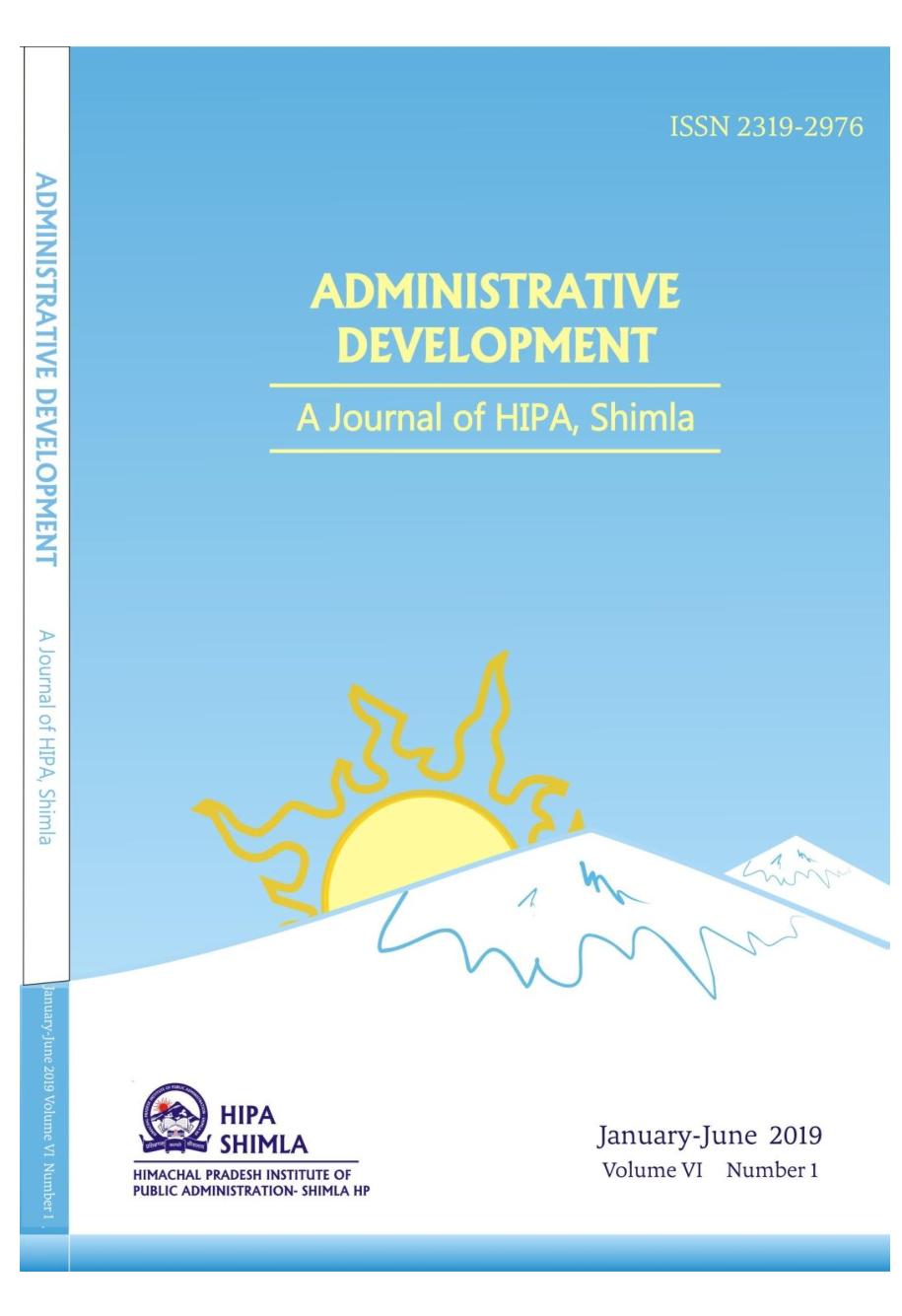EMPIRICAL ASSESSMENT OF SOCIAL AUDIT OF MGNREGA: A CASE STUDY OF HAMIRPUR DISTRICT OF HIMACHAL PRADESH
Keywords:
MGNREGA, People Participation, Social Audit, TransparencyAbstract
Social audit is an audit of programme that is conducted jointly by the Government functionaries and the people, especially by those who are affected by or are the intended beneficiary of such schemes. Social audit can be described as verification of the implementation of a program and its result by the community with the active involvement of stakeholder. By using social audit general public is empowered to monitor the working of Panchayati Raj Institution (PRIs), especially in the implementation of rural employment programme MGNREGA. With the help of social audit people are able to make panchayat office bearer and officials accountable. The present paper is an attempt to review the actual functioning of social audit in Hamirpur district. The study reveals that with the advent of social audit the implementing agencies are becoming more and more accountable and transparent in their functioning. There is a need to enlarge the ambit of the social audit to include other rural development programmes so that people can get their due benefit.

Downloads
Published
How to Cite
Issue
Section
License
Upon acceptance of an article, authors will be asked to complete a 'Journal Publishing Agreement'. An e-mail will be sent to the corresponding author confirming receipt of the manuscript together with a 'Journal Publishing Agreement' form or a link to the online version of this agreement.
Subscribers may reproduce tables of contents or prepare lists of articles including abstracts for internal circulation within their institutions. Permission of the Publisher is required for resale or distribution outside the institution and for all other derivative works, including compilations and translations. If excerpts from other copyrighted works are included, the author(s) must obtain written permission from the copyright owners and credit the source(s) in the article. As a general rule, permission should be sought from the rights holder to reproduce any substantial part of a copyrighted work. This includes any text, illustrations, charts, tables, photographs, or other material from previously published sources.
This journal permits and encourages authors to post items submitted to the journal on personal websites or institutional repositories both prior to and after publication, while providing bibliographic details that credit, if applicable, its publication in this journal.
